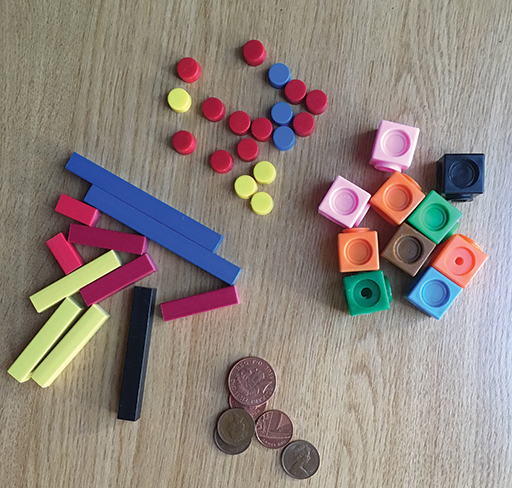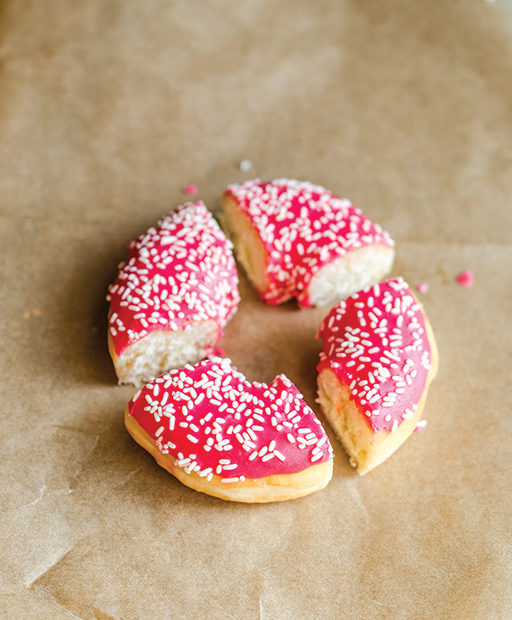Using manipulatives
When first introducing ratio and proportion, it is important to have a range of concrete resources and manipulative materials available for learners to use. For example, multilink cubes, counters, coins and Cuisenaire rods. (Figure 23)
Cuisenaire rods are a great resource for comparing ratios as the rods can all be related in size. For example, the red rod is twice as long as the white rod, so if the white rod is assigned the value of 3 for a particular question, the red rod will represent 6.
Rods are a great tool for exploring multiplicative relationships.
Note: learners need to be given some time to familiarise themselves with the rods and the relationships between the different rods before they can be useful in the classroom.
If you do not have access to a set of Cuisenaire rods, there is a virtual version of them available on the Nrich website, although this does not provide the same concrete resource that the physical rods do.
Depending on the age of the learners and the teaching setting, using edible resources for work on ratio and proportion can be a concrete resource while providing a meaningful real-life context for learners (Figure 24). The ability to cut up certain foods, such as cakes or pizzas, into halves, quarters and so on, means that fractional ratios can be explored in a practical, hands-on way.


